Understanding What a Normal Chinese Meal Entails
Chinese cuisine is known for its rich flavors, diverse ingredients, and unique cooking methods. Understanding a normal Chinese meal can open your eyes to the culinary traditions that have shaped this vibrant culture. Generally, a typical Chinese meal consists of various dishes and is often shared among family or friends. This communal aspect is crucial, as food is a vital part of social interactions in China.
Components of a Normal Chinese Meal
A standard Chinese meal usually includes the following components:
- Main Dishes: These are often protein-based items like chicken, pork, beef, or fish, cooked with various vegetables and sauces.
- Side Dishes: These can include vegetable stir-fries or other small plates that complement the main dish.
- Rice or Noodles: This acts as a staple carbohydrate, providing a base to balance the protein and vegetables.
- Soup: Commonly served as a starter or alongside the meal, soups in Chinese cuisine vary from light broths to hearty concoctions.
- Dessert or Fruit: While not always included, fresh fruit or traditional desserts are a way to wrap up the meal.
Main Dishes: An In-Depth Look
The main dishes feature prominently in any Chinese meal. Here are some examples of common main dishes:
| Dish | Key Ingredients | Flavor Profile |
|---|---|---|
| Kung Pao Chicken | Chicken, peanuts, bell peppers | Spicy and savory |
| Peking Duck | Duck, hoisin sauce, pancakes | Crisp and rich |
| Mapo Tofu | Tofu, minced meat, broad bean paste | Spicy and numbing |
Each dish often represents a balance of flavors—sweet, sour, salty, bitter, and umami—which is a significant principle in Chinese cooking. These flavors come together to create harmony, which is essential to the Chinese dining experience.
Rice and Noodles: The Heart of the Meal
In a normal Chinese meal, rice or noodles serve as the carbohydrate foundation. Rice is more common in southern China, while noodles are a staple in northern regions. Popular types of rice include:
- Jasmine Rice: Known for its fragrant aroma and fluffy texture.
- Sticky Rice: Often used in desserts and dim sum.
Noodles, too, are diverse and can be made from various grains. They can be served in soups, fried, or as part of a stir-fry. Popular noodles include:
- Wheat Noodles: Often found in dishes like lo mein.
- Rice Noodles: Used in dishes like pho or stir-fried meals.
Soups: A Savory Start
Soups often accompany a Chinese meal and are beloved in Chinese culture. Common soups include:
- Hot and Sour Soup: A mix of spiciness and tanginess.
- Wonton Soup: Light broth with dumplings.
Soups add moisture and help cleanse the palate between savory dishes.
Desserts and Fruits: The Sweet Finale
After a fulfilling meal, it’s common to enjoy dessert or fruit. Traditional Chinese desserts often feature ingredients like red bean, lotus seeds, or sesame. Fresh fruit, such as oranges or apples, is also a common choice, providing a refreshing end to a delicious meal.
To explore more about the fascinating world of Chinese food, check out China Sichuan Food or Chinese Soups for authentic recipes and insights.
Understanding what a normal Chinese meal entails not only enriches your dining experience but also allows you to appreciate the depth of flavors and cultural significance tied to each dish. So whether you are dining at a restaurant or making a meal at home, remember that every Chinese meal is more than just food—it’s an experience shared with loved ones.
Key Ingredients Commonly Found in Traditional Chinese Cuisine
When exploring the vibrant and diverse landscape of traditional Chinese cuisine, you’ll find a fascinating array of key ingredients that bring beloved dishes to life. These ingredients not only define flavors but also represent the rich culture and history of China. Here’s a deep dive into some of the most common ingredients you’ll encounter in a typical Chinese meal.
Staple Ingredients
Rice and noodles are staples in Chinese cuisine. They serve as the foundation for many meals and accompany a variety of dishes.
- Rice: A primary carbohydrate source, rice can be steamed, fried, or served in soups.
- Noodles: Made from wheat, rice, or mung beans, noodles vary in thickness and texture and can be served hot or cold.
Vegetables
Vegetables play a vital role in maintaining the balance of flavors and health in Chinese meals.
- Bok Choy: This leafy green is often used in stir-fries and soups for its crunchy texture and mild taste.
- Chinese Broccoli: Known as Gai Lan, it has a slightly bitter flavor that pairs well with rich sauces.
- Carrots: Commonly added to dishes for their sweetness and vibrant color.
- Mushrooms: Varieties like shiitake and enoki add umami and depth to various recipes.
Proteins
In traditional Chinese meals, various proteins are employed to enrich dishes and provide essential nutrients.
- Pork: A favorite meat option, used in dishes such as sweet and sour pork.
- Chicken: Commonly prepared in stir-fries or steamed dishes, often accompanied by ginger and garlic.
- Tofu: A versatile protein source made from soybeans, and favored for its ability to absorb flavors from other ingredients.
- Fish: Fresh fish is commonly steamed or fried, bringing traditional flavors to the meal.
Herbs and Spices
No meal is complete without the perfect blend of herbs and spices, essential for creating distinctive tastes.
- Ginger: Fresh or dried, ginger adds warmth and depth to countless dishes.
- Garlic: A staple that enhances the flavor of sauces and stir-fried dishes.
- Scallions: Often used as a garnish or for added flavor, scallions bring a refreshing taste.
- Five-Spice Powder: A unique blend of star anise, cloves, Chinese cinnamon, Sichuan pepper, and fennel seeds, commonly used in marinades.
Condiments
These essential elements enhance taste, helping to create layers of flavor in a meal.
- Soy Sauce: A fermented sauce that adds saltiness and umami, essential for marinades and stir-fries.
- Rice Vinegar: This adds acidity and brightness to dishes, balancing flavors effectively.
- Chili Oil: A spicy addition that can heighten the heat level of various recipes.
- Sesame Oil: Used sparingly, sesame oil lends a nutty flavor to dressings and stir-fries.
Regional Variations
Chinese cuisine is incredibly diverse, thanks to the country’s vast geography and ethnic diversity. Each region boasts its own key ingredients and culinary techniques:
| Region | Key Ingredients | Common Dishes |
|---|---|---|
| Sichuan | Sichuan peppercorn, chili, garlic | Kung Pao Chicken, Mapo Tofu |
| Guangdong | Fresh seafood, soy sauce, garlic | Duck Rice, Dim Sum |
| Shandong | Wheat, seafood, vinegars | Sweet and Sour Carp, Jiaozi (Dumplings) |
Traditional Chinese cuisine thrives on a focus on balance, freshness, and a symphony of flavors. By understanding these key ingredients, you can appreciate the depth and variety that characterizes every meal. To learn more about food and recipes from diverse culinary traditions, you can visit Chowhound or explore Serious Eats, both offering valuable insights into cooking practices and dishes from around the world.
Meal Structure: How a Typical Chinese Dinner is Organized
The structure of a typical Chinese dinner is a beautiful orchestration of flavors, textures, and cultural traditions. Understanding this meal’s organization can deepen your appreciation for Chinese cuisine and offer insights into how food plays a central role in social gatherings. A normal Chinese meal usually includes a range of dishes designed to create a satisfying and harmonious dining experience.
A traditional Chinese dinner typically consists of several key components:
- Main Dishes: These are the stars of the meal, often featuring proteins such as chicken, pork, beef, or seafood. Commonly, you will find stir-fried, braised, or steamed dishes, often seasoned with soy sauce, ginger, garlic, or spices.
- Vegetable Dishes: In Chinese cuisine, vegetables play a crucial role and are usually served as separate dishes. Stir-fried greens like bok choy or broccoli are popular choices and add vital nutrients to the meal.
- Rice or Noodles: A typical Chinese dinner would be incomplete without a carbohydrate base. Steamed rice is the most common side, while dishes like fried rice or various noodle types can also be served.
- Soup: As a comforting addition, soup is often served at the beginning or during the meal. Varieties like hot and sour soup or wonton soup are not only delicious but also enhance the overall dining experience.
Each dish has its place in the meal structure and contributes to the communal dining ethos that defines Chinese culture.
During a meal, it is customary to serve all dishes at once, allowing diners to pick and mix their favorites. This communal approach fosters a sense of togetherness, as everyone shares from common plates rather than individual servings.
Flavor Balance: One of the key aspects of a Chinese dinner is achieving a balance of flavors. A meal will often include a mix of sweet, sour, salty, and umami tastes to please the palate. For instance:
| Flavor Type | Common Ingredients |
|---|---|
| Sweet | Honey, sugar, sweet soy sauce |
| Sour | Vinegar, tomatoes, pickled vegetables |
| Salty | Soy sauce, salted fish, fermented products |
| Umami | Mushrooms, broth, soy sauce |
Drinks also hold significance in a Chinese meal. Tea is the preferred beverage, often served as a symbol of hospitality. However, alcoholic beverages like rice wine or beer may also accompany the meal during celebrations.
The timing of a Chinese dinner can vary, but it often occurs around 6 PM to 8 PM, allowing families to gather after a busy day. Dinners might last for a couple of hours, with plenty of conversation and enjoyment of food. In some regions, meals are even longer, particularly when involving multi-course banquets for special occasions.
In addition to the food structure, the presentation of dishes matters greatly. A normal Chinese dinner will often boast colorful arrangements that are visually appealing. This consideration extends beyond aesthetics; it signifies respect for the guests and an invitation to savor the meal.
Sharing food is a vital part of the experience. Diners are encouraged to take small portions of multiple dishes, leading to a communal and inclusive atmosphere. This act of sharing showcases the relationships between family and friends and highlights the significance of unity during meals.
If you’re interested in further honing your appreciation of Chinese meals or learning more about their structure, check out Chinese Food Guru for recipes and tips surrounding Chinese cuisine.
A normal Chinese meal beautifully combines a variety of dishes, representing balance and communal values. The organization of these meals not only satisfies hunger but also brings people together, wrapping culture and tradition in every bite.
The Role of Shared Dishes in Chinese Dining Culture
Chinese dining culture is rich and diverse, with an emphasis on shared dishes that embody the essence of community and togetherness. In a typical Chinese meal, you will notice that food is often served family-style, which encourages interaction and bonding among diners. This communal dining experience stands in stark contrast to the Western practice of individual plates. But what exactly makes shared dishes so significant in Chinese culture?
At the heart of Chinese dining is the belief that meals should be enjoyed with others. This practice creates an inviting atmosphere and fosters connections. When dishes are shared, it promotes conversation as everyone reaches for the same plates, discussing flavors, textures, and experiences. This interaction can strengthen family ties and friendships, making every meal a memorable occasion.
Variety and Choice
One of the most fascinating aspects of shared dishes is the variety they bring to the table. A typical meal might consist of multiple dishes that cater to different tastes, textures, and cooking styles:
- Meat Dishes: Options often include stir-fried chicken, pork, or beef, seasoned with a mix of herbs and spices.
- Vegetable Dishes: Seasonal vegetables, sautéed or steamed, play a crucial role in balancing flavors and providing nutrition.
- Rice and Noodles: As staples in Chinese cuisine, rice or noodles are served to accompany the shared dishes, providing a base that ties everything together.
The gesture of sharing signifies generosity and respect among family and friends. In fact, it’s common for hosts to ensure that everyone tries a little bit of each dish, embodying the idea that food is best enjoyed together. This variety also allows diners to sample foods they may not have chosen for themselves, leading to an exploration of beloved flavors and new favorites.
Customs and Etiquette
Dining etiquette plays a pivotal role in the way shared dishes are enjoyed. For instance, the elder members of the table often have the first pick of food, signifying respect for their status. It’s common for younger diners to serve their seniors before taking food for themselves. This practice reinforces familial bonds and showcases the cultural value placed on hierarchy.
When dining from shared dishes, it is customary to use serving utensils or chopsticks to transfer food from communal plates to your bowl or plate. This practice not only maintains hygiene but also maintains the integrity of the shared meal. You may also notice that diners often offer food to one another, an act that elevates the dining experience by expressing care and camaraderie.
Symbolism and Celebrations
Shared dishes hold significant symbolic meanings in Chinese dining culture. Certain foods are associated with good fortune and prosperity, making them staples during celebrations such as the Chinese New Year. Fish, for instance, is often served whole to signify abundance and completeness. Similarly, dumplings are frequently enjoyed for their resemblance to currency, symbolizing wealth for the year to come.
During festivals and special events, you’ll find larger gatherings where families and friends come together to partake in elaborate spreads, often including a variety of shared dishes. This tradition strengthens community bonds and ensures that the joy of dining is an inclusive experience.
The role of shared dishes in Chinese dining culture is central to how meals are perceived and enjoyed. Offering an array of flavors, encouraging interpersonal connections, and reinforcing cultural values, shared dishes create a sense of belonging. Whether at a family gathering or festive celebration, the act of sharing food continues to play an essential role in nourishing both body and spirit.
For more insights into Chinese dining culture and shared dishes, you can visit Chuang Tian or Chinese Food which dive deeper into the significance of meals and traditions within this incredible culinary heritage.
Regional Variations: Exploring What’s Normal in Different Parts of China
China’s culinary landscape is as vast and diverse as its geography. Each region boasts its own specialties and traditional meals, shaped by local ingredients, climate, and culture. To better understand what a normal meal looks like in various parts of China, it’s essential to explore these regional variations.
In Northern China, particularly in Beijing, meals often emphasize hearty flavors, with wheat-based foods taking center stage. Staples such as noodles and dumplings are popular. A typical meal may include:
- Dumplings (Jiaozi)—filled with pork, vegetables, or seafood.
- Hand-pulled noodles (Lamian)—served in a savory broth or stir-fried.
- Stir-fried vegetables—often seasoned with garlic and soy sauce.
- Peking duck—a famous dish known for its crispy skin and tender meat, usually served with pancakes and hoisin sauce.
Moving southward to Eastern China, particularly Shanghai, the meals take on a sweeter flavor profile. Rice plays a crucial role here, along with seafood due to proximity to water. Common dishes include:
- Sweet and sour pork—highlighting balanced flavors.
- Soy braised fish—often made using fresh catch from nearby rivers.
- Sticky rice dumplings—inflated with sweet or savory fillings.
- Vegetable stir-fries—using local greens like bok choy.
In contrast, Southern China, particularly in Guangdong (Canton), is famous for its dim sum culture. This region leans towards fresh ingredients, particularly seafood and poultry. You might find a typical meal involving:
- Dim sum varieties—small plates served for sharing, including dumplings, buns, and rolls.
- Congee—a rice porridge often enjoyed for breakfast, served with pickled vegetables.
- Roast duck or goose—characterized by its tender meat and crispy skin.
- Stir-fried noodles—loaded with fresh vegetables and meats.
The Western regions, like Sichuan and Xinjiang, showcase spicier and more robust flavors. Sichuan cuisine is renowned for its bold spices and numbing peppercorns, while Xinjiang’s food reflects Central Asian influences. A typical meal here might consist of:
- Mapo tofu—a spicy and fragrant dish made with tofu and ground meat.
- Spicy hot pot—where diners cook ingredients in a bubbling spicy broth.
- Naan bread—from Xinjiang, often served with various meat dishes.
- Grilled lamb skewers—seasoned with cumin and chili.
It’s also crucial to mention the cultural significance of shared dining experiences across China. Meals are typically enjoyed with family or friends, and communal dishes are central to the dining culture. Sharing a meal signifies unity and respect, making it a major component of normal meal practices nationwide.
Different regions also have their own unique spices and cooking methods that shape their culinary identity. For example, while the north might rely on fermentation and pickling, southern cuisine often emphasizes freshness and simplicity. Regional specialties often include:
| Region | Typical Ingredients | Cooking Techniques |
|---|---|---|
| Northern China | Wheat, lamb, potatoes | Boiling, steaming, stir-frying |
| Eastern China | Rice, seafood, pork | Braising, steaming, stir-frying |
| Canton (Southern China) | Rice, fresh vegetables, chicken | Steaming, stir-frying, roasting |
| Western China | Spices, lamb, chili | Grilling, slow-cooking, braising |
Understanding what constitutes a normal meal in China requires you to take into account the regional diversity. Whether it’s the comforting dumplings from the North or the vibrant flavors of Sichuan, each meal serves as a reflection of local culture and tradition. For those interested in delving deeper into Chinese cuisine, resources like China Highlights and The Beijinger offer insights into the rich tapestry of flavors that define this country’s culinary landscape.
Everyday vs. Festive Meals: How They Differ in Chinese Culture
In Chinese culture, meals play a pivotal role, serving as a means of nourishment and social connection. Everyday meals and festive occasions are two sides of the culinary coin, each with distinct characteristics and cultural significance.
Everyday meals in China often focus on practicality, family bonding, and balance. A typical family meal usually features a range of dishes that allow for shared eating experiences. Some common elements include:
- Staple Foods: Rice or noodles are prevalent as the main carbohydrate sources. These staples provide the foundation for any meal.
- Vegetables: A variety of stir-fried or steamed vegetables are often included, emphasizing the importance of greens in daily diets.
- Protein Sources: Meat, poultry, and seafood are usually available in smaller quantities compared to vegetables. Common choices include pork, chicken, beef, or fish, usually prepared simply.
- Seasonings and Sauces: Flavors are enhanced with soy sauce, ginger, garlic, and various spices, reflecting the regional diversity of Chinese cuisine.
Everyday meals are generally light and quick to prepare, often cooked in a stir-fry style or in soups. Families tend to eat together, highlighting the importance of unity and sharing in Chinese culture.
On the other hand, festive meals are grander and rich in symbolism. These meals are often reserved for significant cultural celebrations, holidays, and family gatherings. Here, the emphasis is on abundance and auspiciousness. Key features of festive meals include:
- Special Ingredients: Dishes may include rare or luxurious ingredients, such as abalone, shark fin, or special cuts of meat, to elevate the dining experience.
- Variety and Presentation: Festive meals typically feature an extensive array of dishes, often presented artfully to impress guests. The number of dishes usually symbolizes luck.
- Signature Dishes: Certain dishes are specifically prepared to mark celebrations. For instance, dumplings are common during the Lunar New Year, symbolizing wealth.
- Family Traditions: Many families have traditional recipes passed down through generations, making festive meals a way to honor ancestors and heritage.
Festive meals are often elaborate affairs, emphasizing a sense of belonging and the importance of kinship. In a traditional setting, guests are treated with the utmost respect, and the gathering serves as a reminder of cultural values and cohesion.
When comparing the two, one notable difference is the atmosphere surrounding the meals. Everyday meals are typically relaxed and informal, while festive meals create a festive and joyful environment, often accompanied by decorations and special arrangements.
| Feature | Everyday Meals | Festive Meals |
|---|---|---|
| Ingredient Variety | Common and accessible | Luxury and symbolism |
| Preparation Style | Quick and practical | Complex and artistic |
| Family Involvement | Immediate family | Extended family and friends |
| Atmosphere | Casual and intimate | Festive and celebratory |
To learn more about the rich culinary traditions in Chinese culture, you can explore resources like China Sichuan Food and Chinese Food World, which delve into everyday and festive meal preparations.
This culinary duality reflects broader cultural values. Everyday meals underline closeness, practicality, and the nourishment of family connections, while festive meals embody celebration, tradition, and cultural pride. Understanding these distinctions provides deeper insight into the significance of food in Chinese culture.
The Importance of Tea in a Normal Chinese Meal
In Chinese culture, the role of tea transcends mere beverage status; it becomes an integral component of daily meals and social gatherings. When you sit down for a normal Chinese meal, you’ll often find tea served alongside the dishes, enhancing not just the flavors but also the overall dining experience.
Tea is celebrated for its numerous health benefits, offering a refreshing palate cleanse that pairs well with a variety of foods. It is not unusual to see varieties like green tea, oolong, black tea, or jasmine tea being served. Each type of tea has distinct flavors that can complement the diverse taste of typical Chinese cuisine.
Social Significance of Tea
In many Chinese households, tea serves as a bridge to foster connection among family members and friends. Sharing a pot of tea encourages conversation and camaraderie. Here are some social aspects surrounding tea in a normal Chinese meal:
- Welcoming Guests: When guests arrive, it is customary to offer them tea as a sign of respect and hospitality.
- Festive Occasions: Tea plays a critical role in celebrations like weddings and festivals, often symbolizing unity and joy.
- Cultural Rituals: Traditional ceremonies such as the tea ceremony highlight tea’s significance in Chinese culture, evolving from mere consumption to an art form.
Health Benefits of Tea
Beyond its social role, tea is recognized for its health properties. Here’s a look at why incorporating tea in meals is beneficial:
| Type of Tea | Health Benefits |
|---|---|
| Green Tea | Rich in antioxidants, boosts metabolism, and improves brain function. |
| Oolong Tea | Aids digestion, enhances skin quality, and promotes weight loss. |
| Black Tea | Improves heart health, supports gut health, and lowers stress levels. |
| Jasmine Tea | Boosts mood, reduces fatigue, and enhances immune health. |
Pairing Tea with Food
In a normal Chinese meal, the choice of tea can greatly enhance the flavor profile of the dishes served. Here are some popular pairings:
- Dim Sum: Typically paired with Oolong tea, which complements the rich, savory flavors.
- Spicy Dishes: For spicy stir-fries or Szechuan food, cooling green tea can balance out the heat.
- Seafood: A light white tea or jasmine is excellent for cleansing the palate when eating fish or shellfish.
- Duck and Rich Meats: Black tea works well with duck, offering a sweet and smoky contrast.
Tea and Traditional Dishes
Familiarity with traditional Chinese dishes can enhance your understanding of tea’s importance in meals. Common dishes such as:
- Peking Duck, often enjoyed with black tea.
- Mapo Tofu, typically paired with jasmine for freshness.
- Sweet and Sour Pork, where green tea balances sweetness.
Moreover, the ritual of pouring tea into small cups enhances the overall meal experience. The careful preparation and attention to detail are valued in Chinese dining culture, highlighting the respect for food, drink, and companionship.
Tea is not just a beverage but a multifaceted component of a normal Chinese meal that enhances flavors, benefits health, and fosters social bonds. Whether you sip jasmine tea with dim sum or enjoy dark oolong with roast meats, tea intricately weaves itself into the fabric of Chinese dining traditions. To learn more about the cultural significance of tea, you can visit China Highlights for an insightful read.
As you explore the world of Chinese cuisine, don’t overlook the importance of tea. It could transform your meals and enrich your dining experiences with family and friends, making each bite and sip meaningful.
Key Takeaway:
When exploring the essence of what constitutes a "normal Chinese meal," several key aspects come into play that reflect both culture and tradition. Understanding these elements will enhance your appreciation for Chinese dining experiences, whether you’re enjoying a homemade meal or dining out.
Firstly, a normal Chinese meal typically features a variety of dishes served simultaneously. This meal structure allows for a communal experience, where diners share dishes rather than having individual plates. This practice not only facilitates social interaction but also showcases the diverse flavors and textures significant in Chinese cuisine.
Key ingredients play a vital role in traditional Chinese meals. Staples such as rice, noodles, vegetables, and various proteins (like pork, chicken, and seafood) form the backbone of most dishes. Seasonings such as soy sauce, ginger, garlic, and sesame oil enhance the flavors, making them integral to a normal meal.
Regional variations are another fascinating aspect of Chinese cuisine. Each region in China has its unique culinary traditions and normal meal compositions. For instance, Sichuan cuisine is famous for its bold, spicy flavors, while Cantonese meals tend to focus on freshness and subtlety. Understanding these regional differences can help you appreciate the richness of Chinese culinary culture.
In addition, the distinction between everyday meals and festive ones cannot be overlooked. While everyday meals are typically simple and quick to prepare, festive meals, often reserved for celebrations, are elaborate and may include a wider variety of dishes, often symbolizing good luck and prosperity.
Tea holds a place of honor in Chinese dining culture. It is not merely a beverage but an integral part of the meal, finishing it off or enhancing group interactions. The act of sharing tea can symbolize respect and hospitality.
A normal Chinese meal embodies shared experiences, a diverse array of ingredients, regional uniqueness, and the integration of tea. Recognizing these elements can deepen your understanding and enjoyment of this rich culinary tradition.
Conclusion
A normal Chinese meal is a delightful journey through a rich tapestry of flavors, ingredients, and cultural practices. Understanding what this meal comprises gives you insights into a world of culinary traditions that have flourished for centuries. Key ingredients such as rice, noodles, fresh vegetables, and a variety of meats serve as the foundation of many dishes, showcasing the balance of flavors in traditional Chinese cuisine.
The structure of a typical Chinese dinner is designed for sharing, fostering connection and conversation among diners. This communal aspect highlights the significance of shared dishes, which often feature vibrant colors and eclectic ingredient combinations, inviting everyone to engage in the meal together. Importantly, regional variations introduce unique twists, giving you a taste of local specialties that reflect the geographic and cultural diversity across China.
Everyday meals differ remarkably from festive occasions, with gatherings during celebrations featuring more elaborate dishes and displays of culinary mastery. While enjoying a meal, the important role of tea cannot be overlooked; it’s a drink that uplifts the dining experience, complementing flavors and adding warmth to the atmosphere.
Understanding these elements not only enhances your appreciation for a normal Chinese meal, but it also brings you closer to understanding the culture and traditions that shape the Chinese dining experience. So, whether it’s a simple bowl of noodles or a lavish spread for a celebration, each meal tells a story worth sharing.
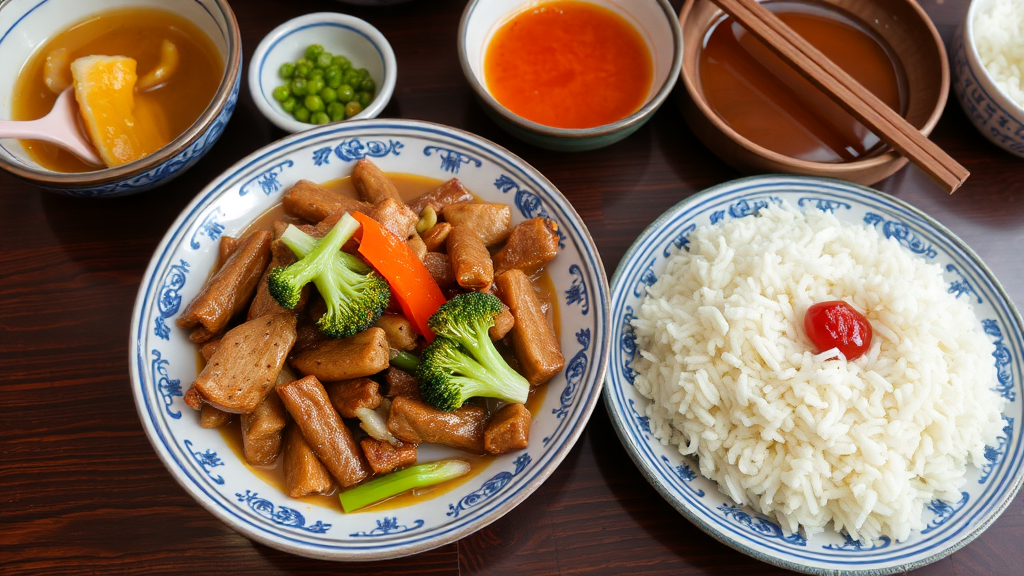


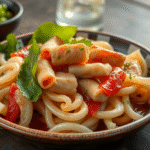
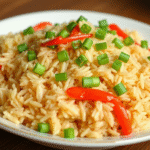
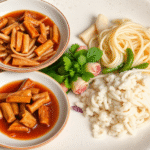
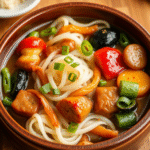
Leave a Reply